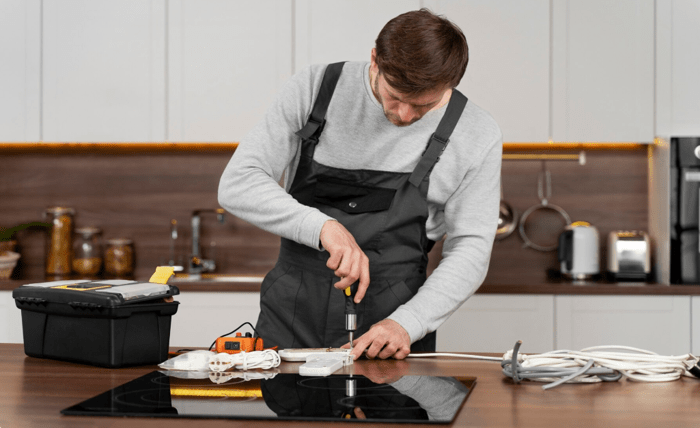Replacing Refrigerator Door Seals
A damaged or worn-out door gasket is one of the biggest culprits behind a refrigerator struggling to maintain its set temperature. These seals are designed to keep cold air locked inside the fridge, but over time, they can crack, tear, or simply wear down, allowing cold air to escape. This means your refrigerator’s compressor has to work harder, increasing your energy consumption and potentially raising your electricity bills. Fortunately, replacing a refrigerator door gasket is a project most homeowners can manage. Start by identifying the exact model of your refrigerator and order a compatible replacement gasket. You can easily find model-specific parts at major retailers and through Samsung Parts. To replace, gently pull out the old gasket, carefully clean the groove where the new seal will go, and press the new gasket into place. Ensure the seal fits snugly to maximize the efficiency boost and prevent future issues.
Unclogging a Dishwasher Drain
Homeowners should recognize when to seek professional help for washer repairs, especially when dealing with high-voltage electronic components or gas-powered washers. Complex repairs require advanced tools and knowledge, and professional technicians follow local codes to ensure safety. Before attempting major repairs, consult your appliance’s warranty documentation and contact the manufacturer or authorized service center. Recognizing early signs of wear and utilizing reliable parts sources can help extend your washing machine’s useful life.
Cleaning Dryer Lint Traps and Vents
Lint buildup in clothes dryers is a safety hazard, reducing efficiency and posing a fire risk. To maintain performance, clear the lint trap after each load and clean the dryer system every few months. This ensures better drying power, shorter cycle times, and enhanced home safety.
Replacing Oven Heating Elements
Faulty heating elements can cause uneven baking or cold ovens. Replacing them is simple and requires safety. First, unplug the oven, unscrew the defective element, disconnect the wires, and reassemble the new heating element. Test the oven at a low temperature before repairing. Replacing malfunctioning heating elements improves cooking results and appliance lifespan.
Replacing Washing Machine Belts
To fix a sluggish washer drum, remove the old belt and install a new one, ensuring proper tension and alignment. Run a spin cycle to check if normal operation is restored. This DIY repair is cost-effective, can restore optimal washing performance, and prevent premature machine replacement.
Cleaning Refrigerator Coils
Dust and pet hair buildup on refrigerator coils can cause the fridge to work harder, wasting energy and causing component wear. Cleaning these coils is crucial for lower utility bills and longer appliance life. Use a coil cleaning brush or vacuum attachment to loosen debris.
Unclogging Range Ignition Ports
To fix a gas range that is not lighting, turn off the gas supply, clean the ignition ports with a soft-bristle brush, wipe away grease or food particles, reassemble burner parts, and test the ignition. This regular cleaning habit improves cooking safety and efficiency.
Replacing Dishwasher Gaskets
A leaking dishwasher is a hassle and can cause water damage if ignored. The most common cause is a deteriorated or misaligned gasket that no longer forms a watertight seal. Identify your dishwasher’s make and model, order a matching replacement gasket, and carefully remove the old, worn seal. Use a mild cleaner or vinegar solution to thoroughly clean the gasket groove before pressing in the new one. Make sure it fits evenly around the door opening. With a fresh gasket in place, leaks are typically eliminated, allowing your appliance to clean effectively and efficiently again.

